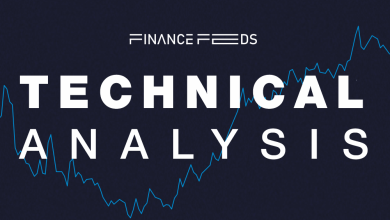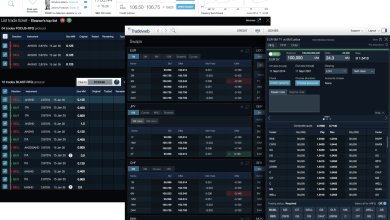Onchain Capital Could Exceed $100T Fueled by Global Tokenization Push, Says TD Cowen


TD Cowen, a leading financial services and investment firm, has released a bullish forecast stating that tokenization could drive global on-chain capital within five years. According to the projection, the growth will be driven by a massive push toward real-world asset (RWA) tokenization, including securities and infrastructure.
According to Cowen analysts, the on-chain economy across , decentralized finance (DeFi), staking infrastructure, and on-chain liquidity is poised for accelerated growth. The firm believes that advancements in technology, regulation, and cross-border capital flows will unlock more demand for programmable, tradable financial products.
Tokenization Could Be the Future of Investing
The latest research highlights tokenization — the process of representing real-world assets like real estate, equities, and bonds on blockchain networks — as the primary potential driver. The analysts estimate that a meaningful portion of the global financial markets could gradually migrate to on-chain platforms as institutions adopt them for efficiency, transparency, and fractional access.
The projection is another major highlight of how traditional capital might increasingly migrate onto blockchain rails over the coming years. One key driver is fractional ownership, which tokenization offers. For instance, tokenizing a real estate property allows the participation of many investors at lower thresholds. Combined with 24/7 settlement, lower frictions, and programmable blockchain finance, tokenized assets could attract capital currently locked in traditional or off-chain instruments.
In addition, the forecast emphasizes the growing role of stablecoins, on-chain money markets, and investment-level digital securities as efficient bridges between traditional finance and decebtralized finance (DeFi). As these sectors mature, Cowen views network effects scaling across lending, yield aggregation, and digital treasury management.
What Tokenization Means For the Crypto Economy
If on-chain capital truly reaches $100 trillion, the implications for finance, crypto, and regulation are profound. First, there could be a disruption of old chains, especially traditional intermediaries, such as custodians, clearinghouses, and custodial banks, who may find themselves disrupted as blockchain-native infrastructure gains popularity.
Additionally, there could be a shift in , as borders, jurisdiction, taxation, and legal clarity would become critical. Regulators will need to adapt rapidly to monitor cross-border token flows, custody rules, and compliance in a tokenized world.
Multiple blockchains and standards would also compete for dominance, boosting on-chain economic value across the ecosystem. However, Cowen also notes that the $100T figure is less a precise prediction than a directional signal. At the end of the day, timing, macroeconomic conditions, user adoption, and regulatory clarity all remain crucial.
Overall, TD Cowen’s forecast reiterates how tokenization is no longer an experimental move but a major strategic shift globally. If it becomes a reality, the movement of trillions of dollars onto blockchain could transform finance tremendously. For crypto builders, institutions, and regulators, the challenge lies in building to scale while prioritizing securety and continuous alignment to keep pace with the broader ecosystem ambition.







